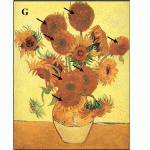
Swimming in a school may confuse predators. Image: Shutterstock.
Scientists have figured out what ‘scary stuff’ is really made of.
When one fish is injured, the rest of the school will flee in panic. They’ve been alerted by a substance called Schreckstoff, which means ‘scary stuff’ in German.
Researchers from the National University of Singapore and Duke-NUS Graduate Medical School also in Singapore have determined what the scary stuff is really made of. According to the study, published today in Current Biology, it contains a type of sugar found in fish skin.
When a fish is injured, fragments of the sugar, known as chondroitin sulfate, are released whether or not there are any other fish nearby. According to author Suresh Jesuthasan, chondroitin sulfate is a major component of fish skin and its breakdown, triggered by an injury, appears to be the key.
“Our results provide a solution to a 70-year-old puzzle: the nature of this alarm signal,” Jesuthasan said.
The researchers found that Schreckstoff and the sugar fragments register in the cent-processing olfactory bulb within the brain of a zebra fish. This region contains a class of sensory neurons (crypt cells) which, the authors suggest, may be specialised to detect the ‘sweet’ alarms.
“This region of the olfactory bulb has unique projections to higher centres of the brain,” Jesuthasan said. “So there may be a special circuit mediating aspects of the innate fear response.”
Fish able to pick up the scent and flee are more likely to survive and reproduce. However, some fish species can smell alarm signals released by closely related species but respond less intensely to signals from more distant relatives.
This suggests that the chondroitin sulfate may come in a variety of flavours. The researchers are now interested in testing whether the fragments in zebra fish will trigger the same responses from other species.
The discovery could also allow scientists to better understand the neural basis of fear. “Given the transparency of larval fish, it is possible to see at single-cell resolution what happens throughout the brain when the organism detects danger,” Jesuthasan said.
This may allow scientists to determine how neurons regulate behaviour and emotional responses. — Laura Boness
Source: Eureka Alert






